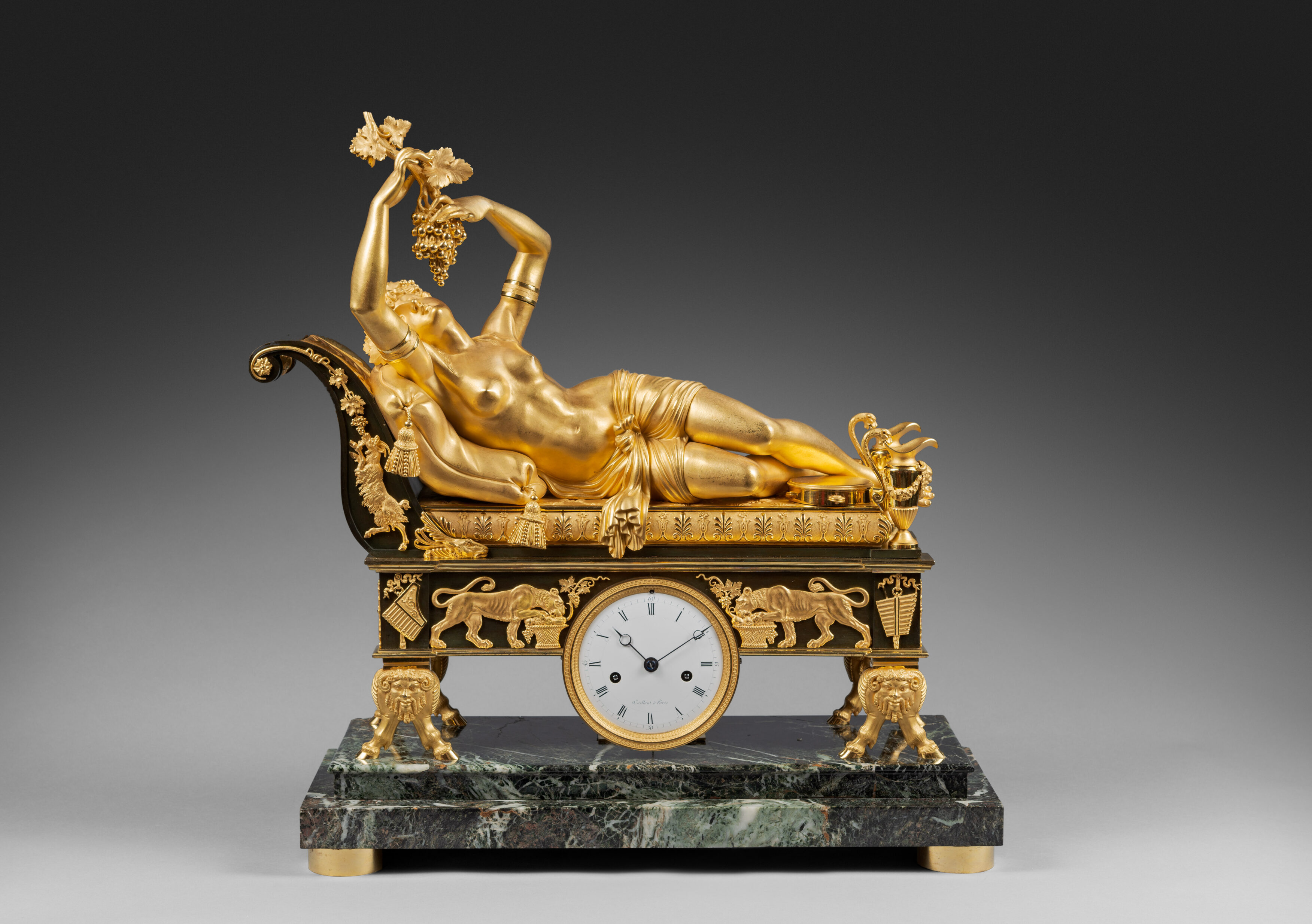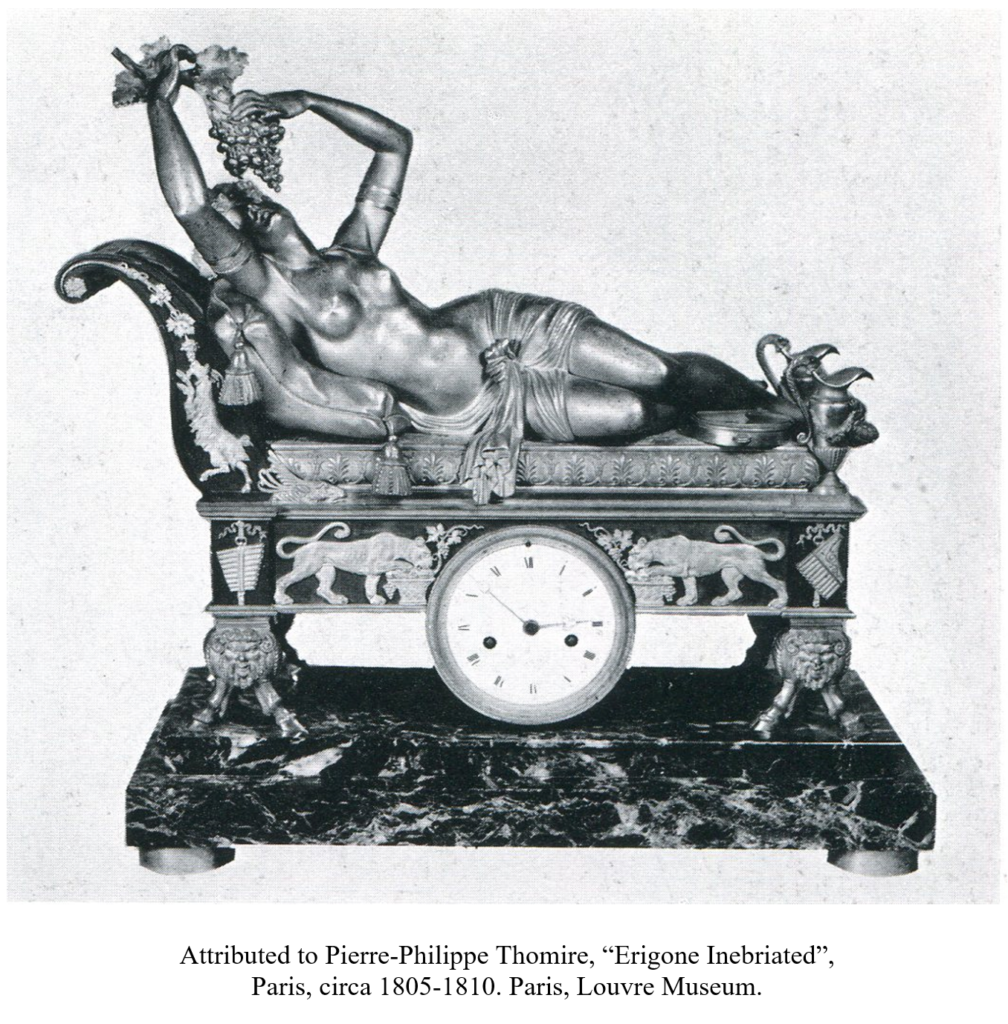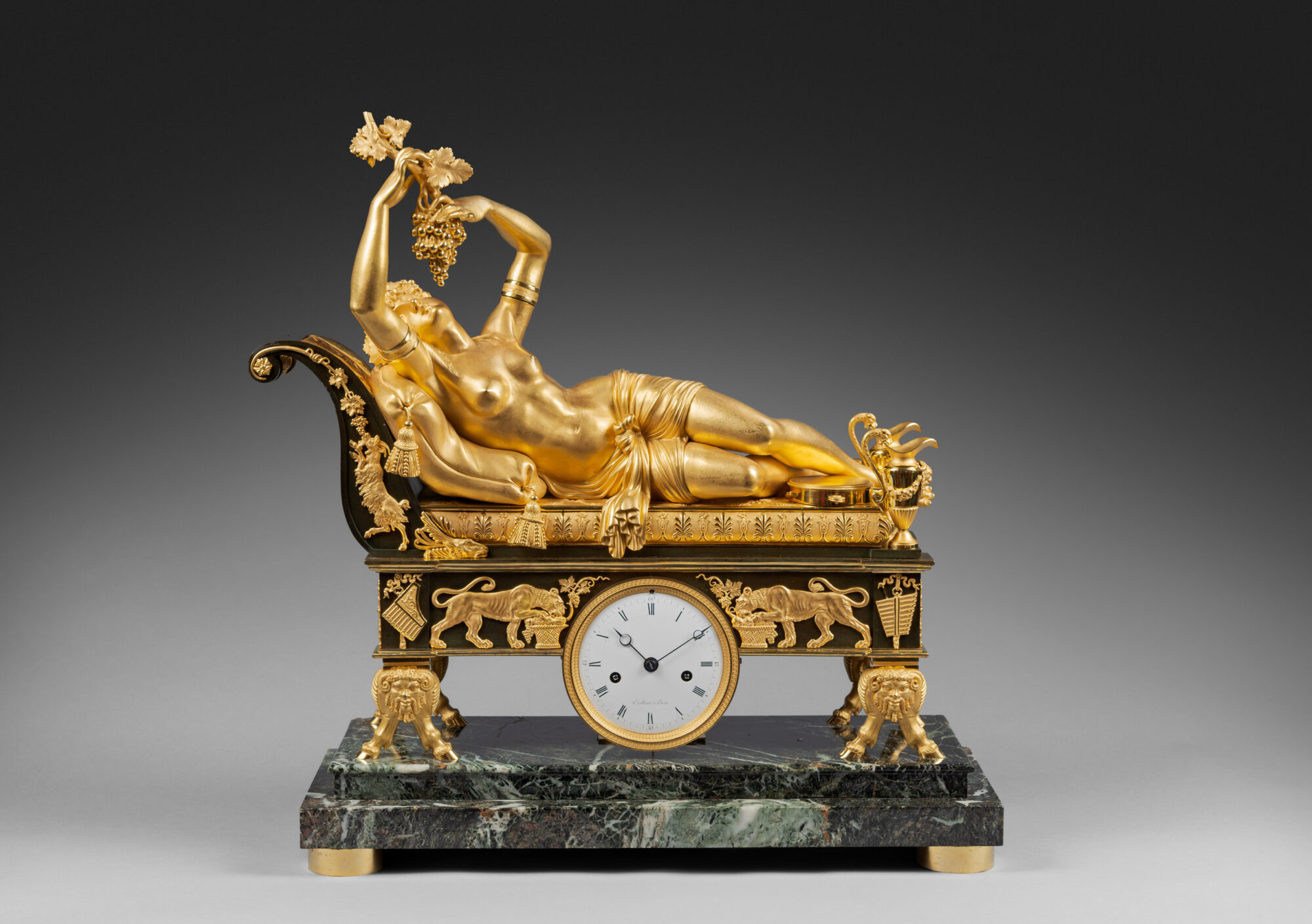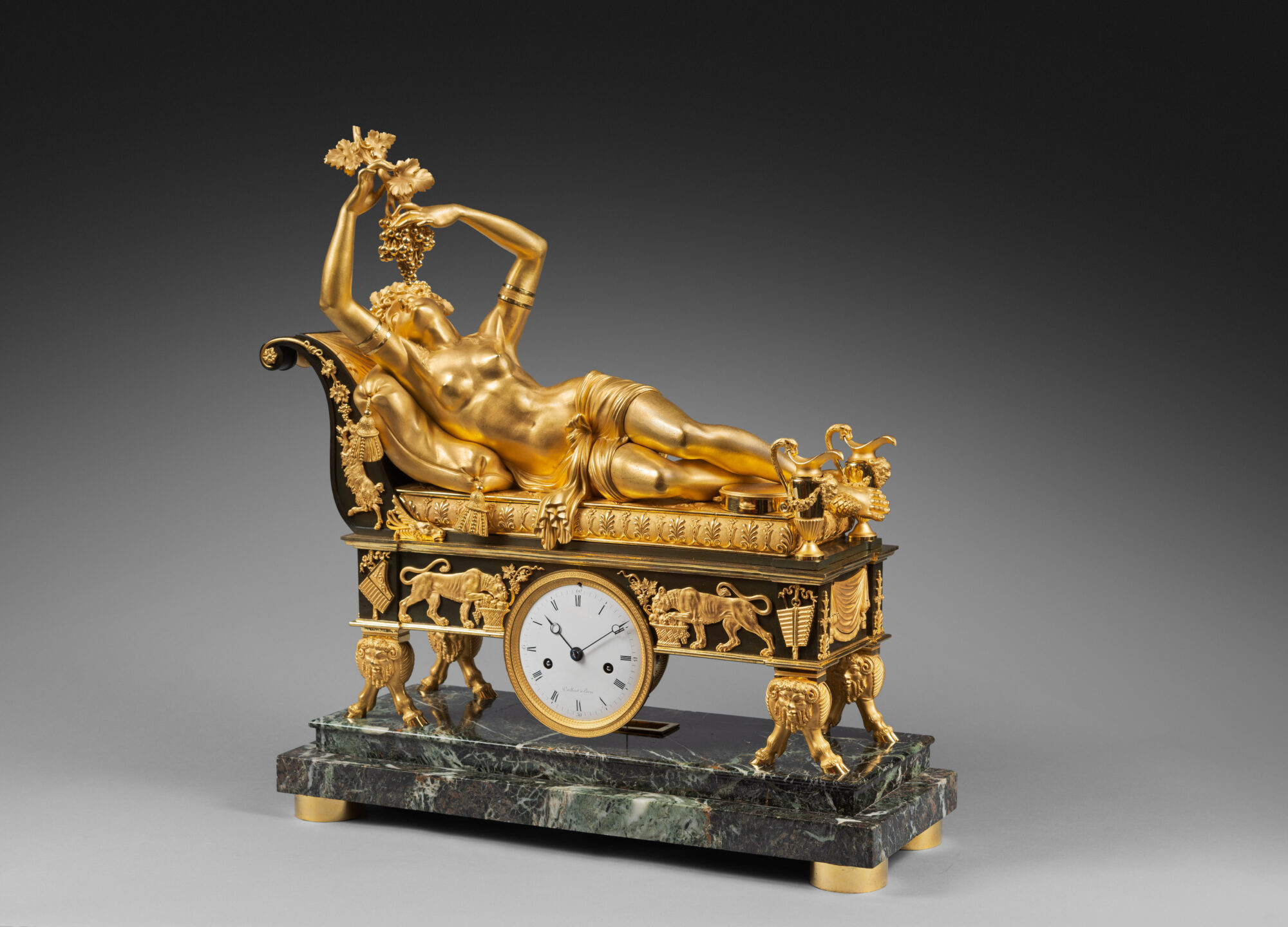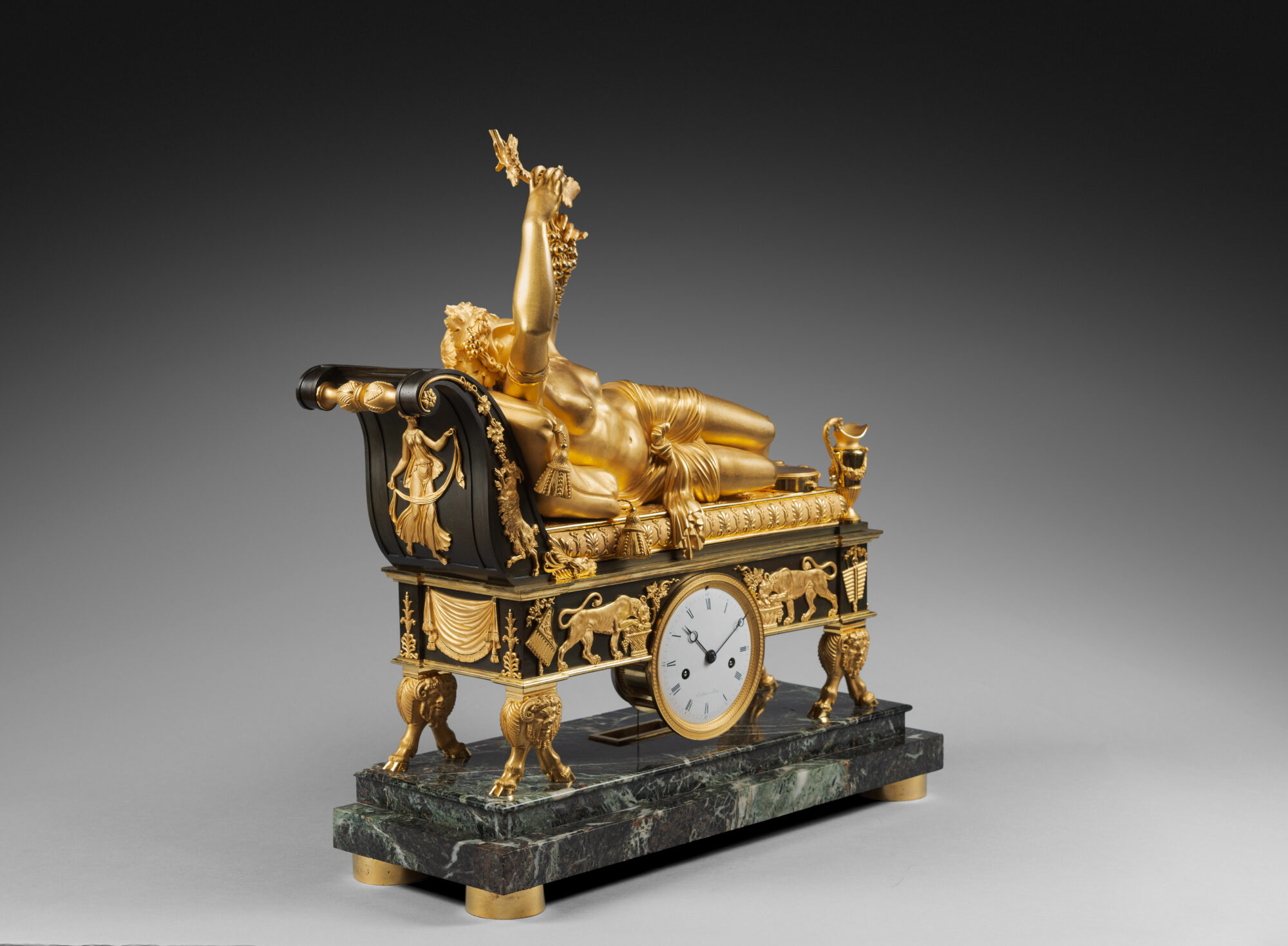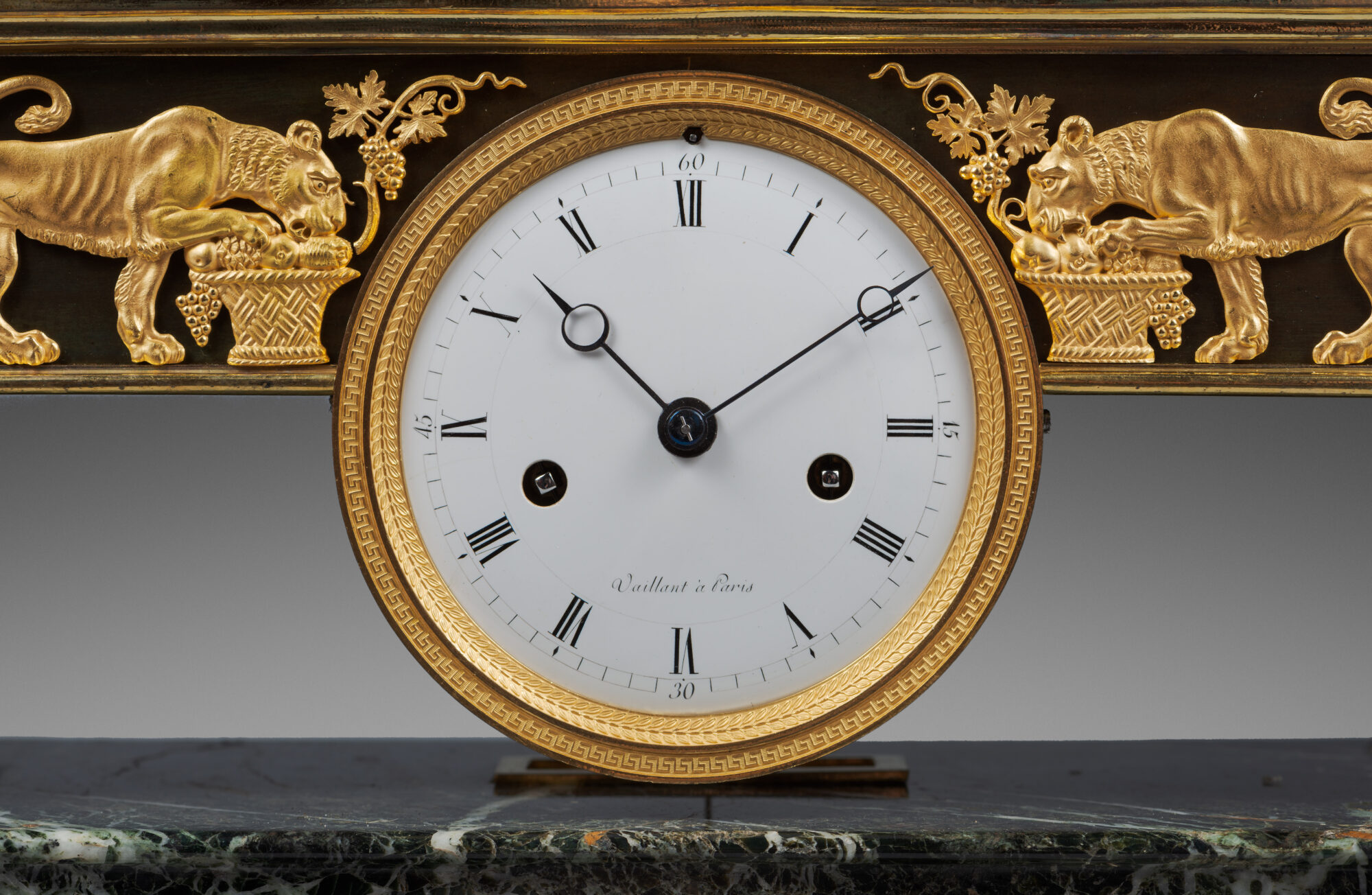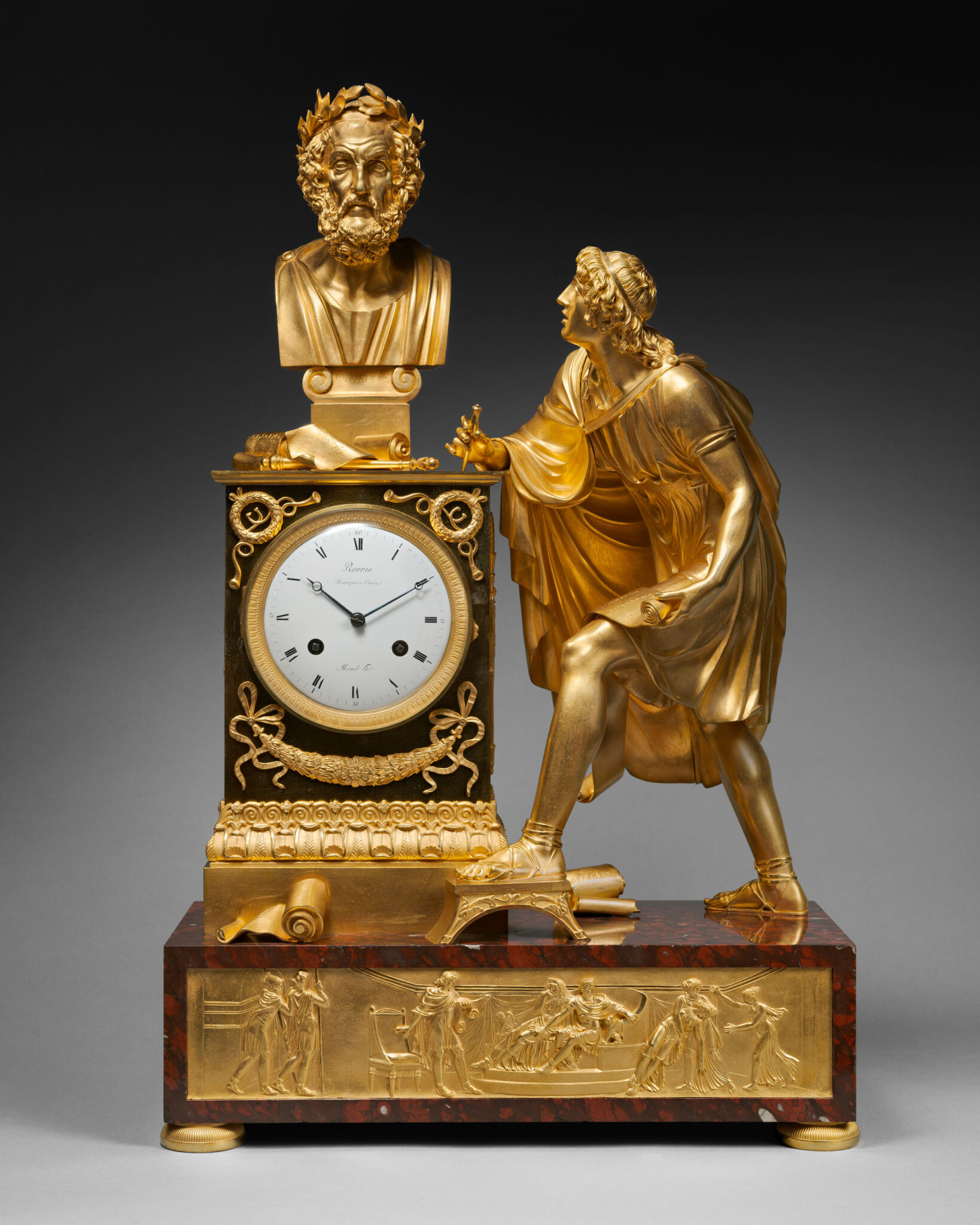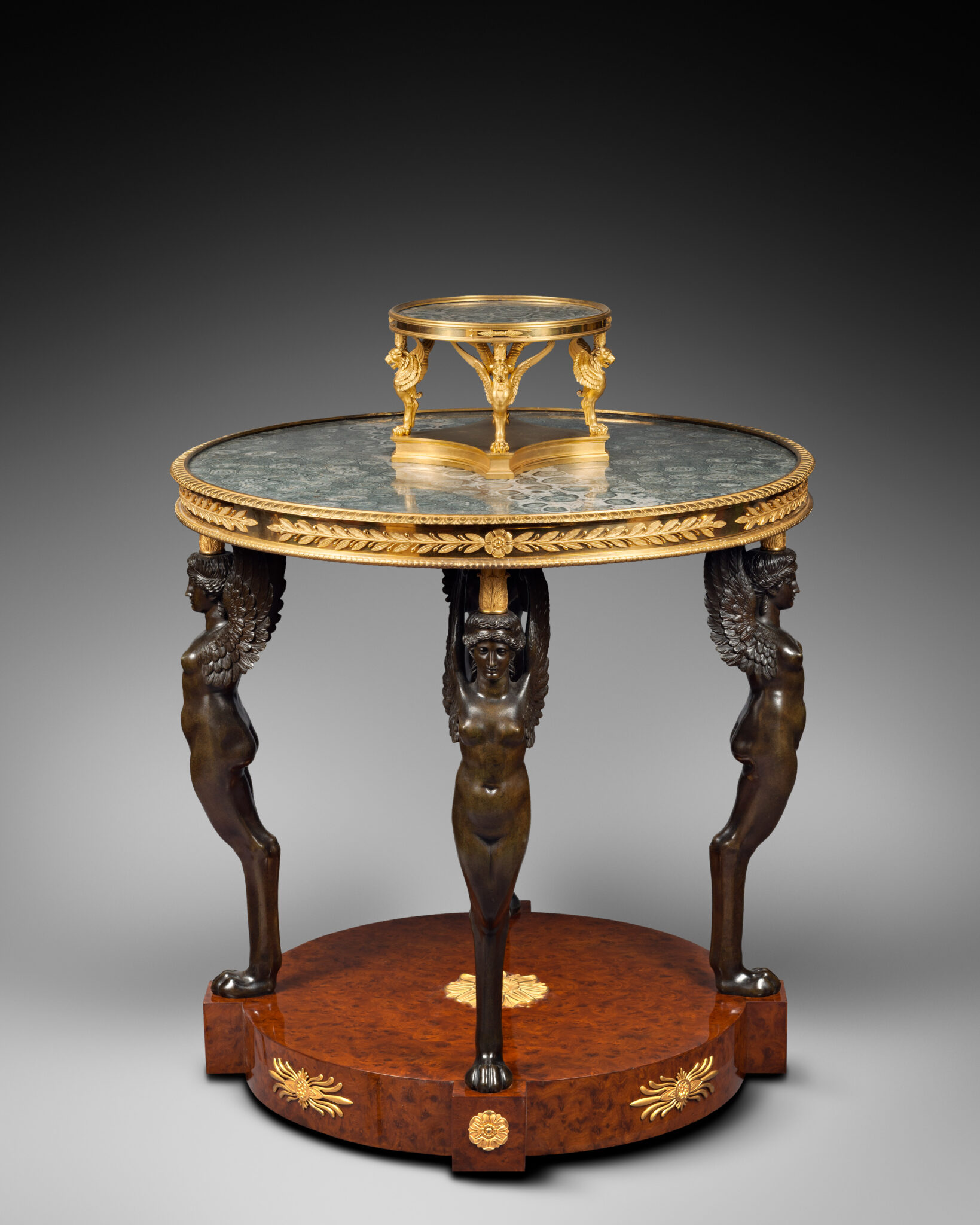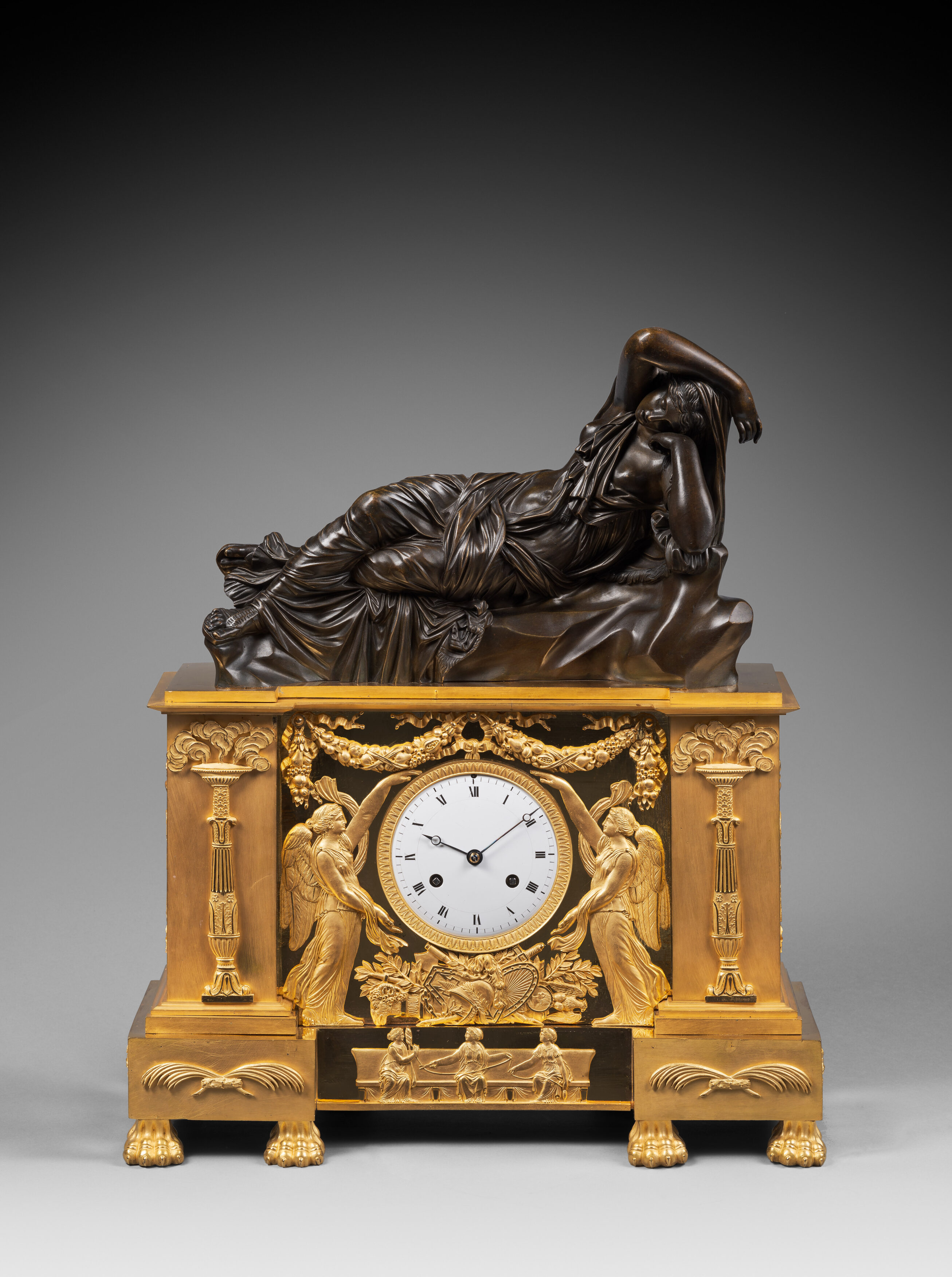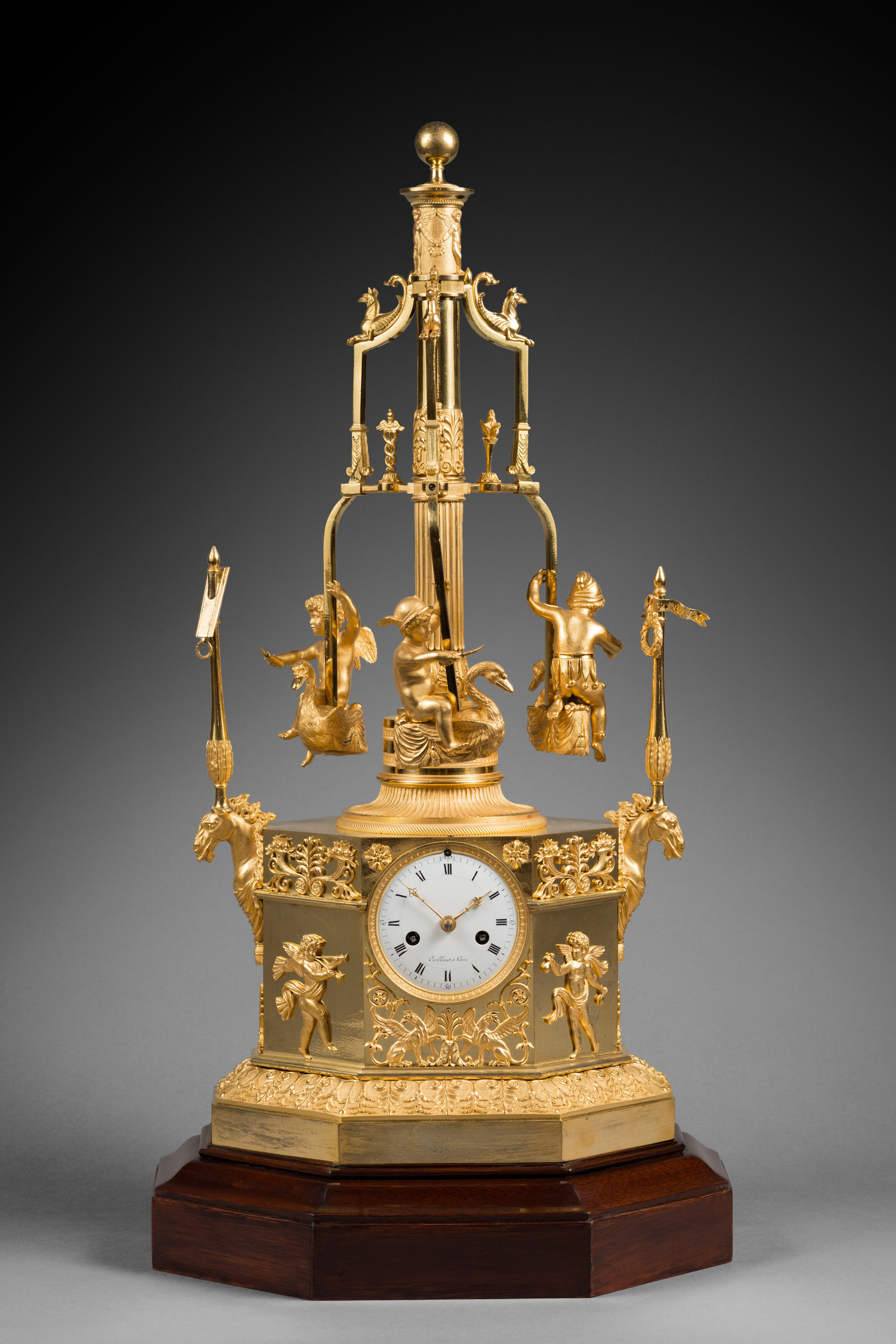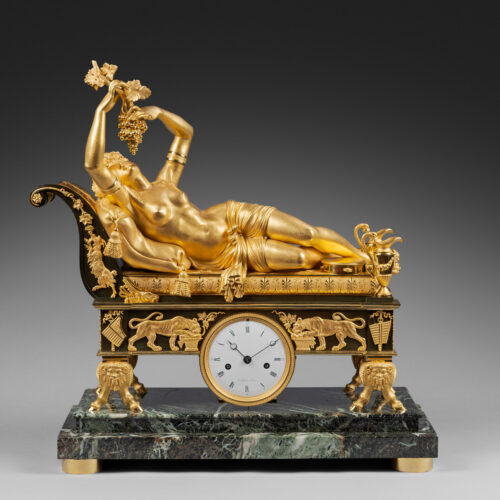Rare Matte and Burnished Gilt Bronze Mantel Clock
“Erigone Inebriated”
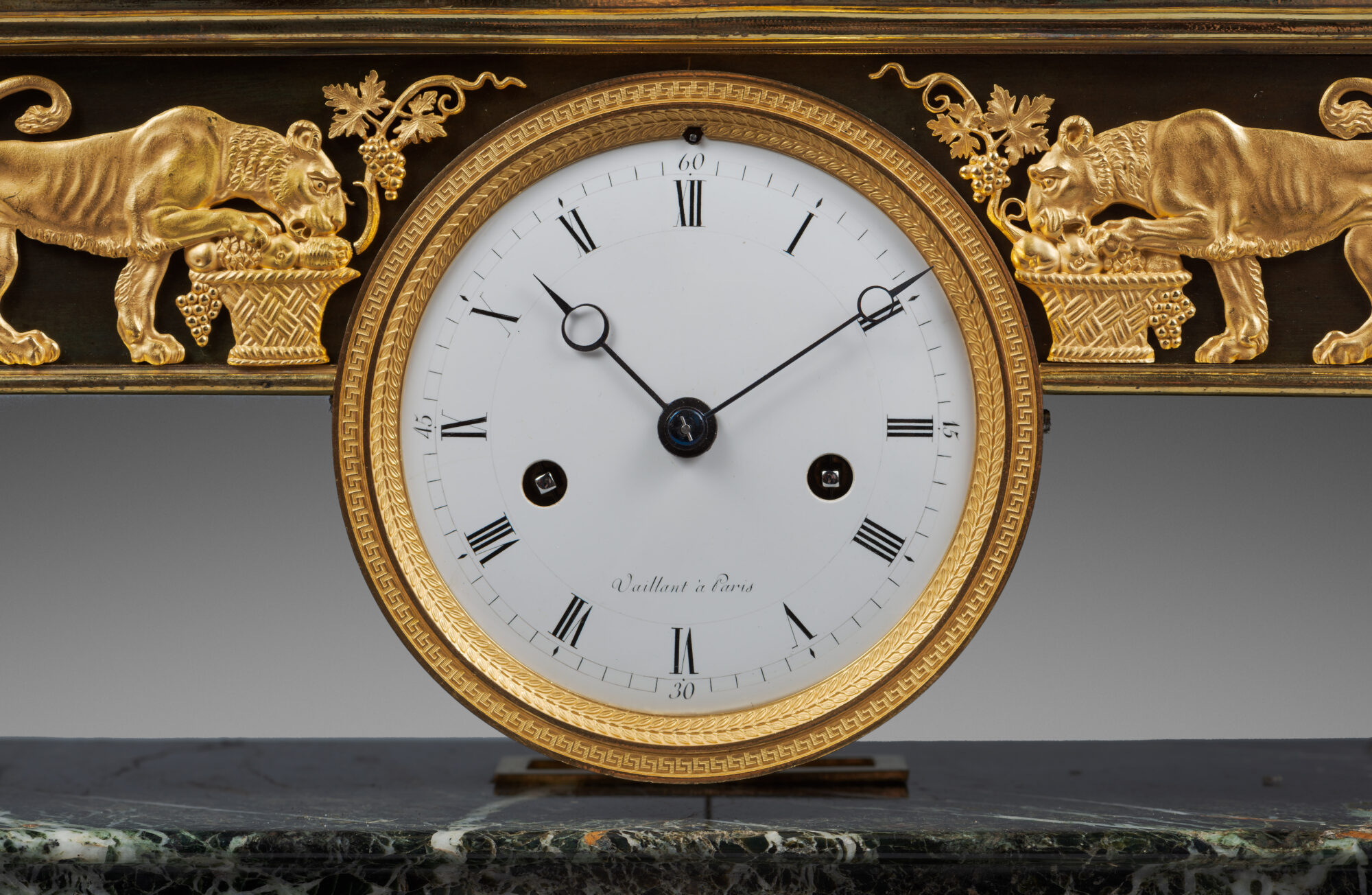
Case attributed to Pierre-Philippe Thomire
Paris, Empire period, circa 1805-1810
The round white enamel dial, signed “Vaillant à Paris”, indicates the Roman numeral hours and the Arabic fifteen-minute intervals, by means of Breguet hands in blued steel. The bezel is adorned with olive-leaf and Greek key friezes. The case is made of chased, gilded and patinated bronze. The movement is placed in the center of an entablature with applied motifs including two facing panthers that are eating fruits from two baskets, stylized palmettes, fringed draperies, and a pan’s pipe or syrinx and a xylophone, both suspended from ribbons. The clock is raised upon four feet adorned with Bacchus masks and two goats’ legs. Above, a magnificent, lightly clad bacchante reclines on a daybed decorated with a frieze of alternating palmettes and stylized flowers, a tambourine, a thyrsus, and two ewers with lions’ head handles that are placed at her feet. The young woman, who represents the mythological figure Erigone, reclines on a cushion that rests on the curved headboard. The daybed is adorned with rosettes, grape vines, and goats; the bacchante holds a bunch of grapes aloft. The quadrangular vert de mer marble base is supported on four truncated cylindrical feet.
Discover our entire collection of antique mantel clocks and rare clocks online or at the gallery.
The myth recounting the love affair between Erigone, the daughter of the Athenian Icarios, and the god of wine Dionysos, is one of the most famous in all Greek mythology. To seduce her, the god took the form of a bunch of grapes, making her drunk. This theme inspired the present clock, whose exceptional chasing and gilding and highly unusual composition support our attribution to Pierre-Philippe Thomire, the most talented Parisian bronze caster of the Empire period.
Only a few similar clocks are known today. Among them, one model, featuring variations, was in the collection of the Hessian princes in the Fasanerie Palace in Fulda (illustrated in the exhibition catalogue Gehäuse der Zeit, Uhren aus fünf Jahrhunderten im Besitz der Hessischen Hausstiftung, 2002, p. 95, catalogue n° 36). A second clock is in the Peterhof Palace near Saint Petersburg (see O. Swetlitschnaja, Russische und Französische Bronzen des Empire, Aus der Sammlung der Museen von Petrodvoretz, Postdam, 1990, p. 27, catalogue n° 13).
Two further clocks are identical to the present example. The first is illustrated in P. Kjellberg, Encyclopédie de la pendule française du Moyen Age au XXe siècle, Paris, 1997, p. 402; the second is in the Louvre Museum in Paris (illustrated in H. Ottomeyer and P. Pröschel, Vergoldete Bronzen, Die Bronzearbeiten des Spätbarock und Klassizismus, Band I, Munich, 1986, p. 379, fig. 5.15.19).
Louis-Jacques Vaillant is one of the most important Parisian clockmakers of the Empire period. Probably a member of the family of Jacques-François Vaillant, another famous clockmaker, he almost certainly trained in the family workshop on the Quai des Augustins, becoming a maître on February 12, 1787. He soon encountered immediate success with influential Parisian collectors of luxury clockmaking. Tardy mentions his workshop as being in the rue de la Tixéranderie in 1800, and in the rue de la Verrerie from 1812 to 1817. At that time, certain of his clocks were mentioned as being in the collections of some of the most important collectors of the time, including those described in the probate inventories of personalities such as Viscount Charles-Marie-Philippe Huchet de la Bedoyère, Charles-Jean-François de Malon de Bercy and Alexandre-François, Count de La Rochefoucauld.
Pierre-Philippe Thomire (1751 - 1843)
Pierre-Philippe Thomire was the most important Parisian bronzier of the last quarter of the 18th century and the first decades of the following century. Early on in his career he worked for Pierre Gouthière, ciseleur-fondeur du roi, and toward the mid-1770’s began working with Louis Prieur. He later became one of the bronziers attached to the Manufacture Royale de Sèvres, creating the bronze mounts for most of the important creations of the day. After the Revolution, he purchased the stock of Martin-Eloi Lignereux, thus becoming the most important suppliers of furniture bronzes for châteaux and Imperial Palaces. In addition, he worked for a wealthy private clientele, both French and foreign, including several of Napoleon’s Marshals. Thomire retired in 1823.
